The red devil cichlid, also known as Amphilophus labiatus, is a large and aggressive cichlid fish native to Lake Managua and Lake Nicaragua in Central America. They are known for their territorial nature and will often attack other fish in the tank.
Red devil cichlids also have a tendency to destroy anything they can get their mouths on. With an average size of 15 inches, they require a spacious tank. Compatible tank mates for red devil cichlids include other red devil cichlids, plecos, jaguar cichlids, Jack Dempsey cichlids, and tire track eels.
They should be fed a diet of earthworms, bloodworms, krill, and plant-based foods. The ideal temperature for red devil cichlids is around 75-80°F. These fish display a wide range of colors, from gray to green to white, pink, and red.
Table of Contents
Introduction To Red Devil Cichlids
Red Devil Cichlids, also known as Amphilophus labiatus, are large and aggressive cichlid fish endemic to Central America. They are territorial and may attack other fish in the tank. These fish require a spacious tank and a varied diet consisting of both meat and plant-based foods.
Overview Of Amphilophus Labiatus
The Red Devil Cichlid, scientific name Amphilophus labiatus, is a large and aggressive cichlid fish endemic to Lake Managua and Lake Nicaragua in Central America. It is also commonly known as the Red Devil Cichlid. This fish is closely related to another cichlid species called A.
Citrinellus, which also shares the common name Red Devil Cichlid. The Red Devil Cichlid is known for its vibrant coloration and unique behavior, making it a popular choice among cichlid enthusiasts.
Common Name: Red Devil Cichlid
When it comes to aggression, the Red Devil Cichlid lives up to its name. These fish are highly territorial and will not hesitate to attack other fish in the tank, even those of the same species. In fact, you’ll often find them attempting to destroy anything they can fit in their mouths.
It’s important to keep this in mind when considering tank mates for your Red Devil Cichlid.
Tank Size: Red Devil Cichlid
Red Devil Cichlids can grow quite large, reaching an average size of around 15 inches. Therefore, they require a spacious tank to thrive. Here are some tank size recommendations for keeping Red Devil Cichlids:
- A minimum tank size of 55 gallons is recommended for a single Red Devil Cichlid.
- If you plan to keep multiple Red Devil Cichlids, a larger tank of at least 75 gallons or more is necessary to provide enough space for them to establish territories and minimize aggression.
Compatible Fish: What Fish Can Live With Red Devil Cichlid
While Red Devil Cichlids may be visually stunning, they are also exceptionally aggressive. Thus, it is crucial to choose tank mates carefully. Here are some recommendations for compatible fish to coexist with Red Devil Cichlids:
- Large and equally robust cichlids, such as the Midas Cichlid or the Jack Dempsey Cichlid, can handle the aggressive nature of the Red Devil Cichlid.
- Plecos or other catfish species can be suitable tank mates, as they typically dwell at the bottom of the tank and are less likely to encroach on the Red Devil Cichlid’s territory.
Remember that individual temperaments may vary, so close monitoring of tank dynamics is essential when introducing new tank mates to your Red Devil Cichlid.
The Red Devil Cichlid is a beautiful and fascinating fish known for its vibrant coloration and aggressive nature. With proper care, a suitable tank size, and compatible tank mates, this cichlid can thrive in captivity. However, it is important to be mindful of their territorial behavior and aggression when selecting tank mates.
Behavior And Temperament
Red Devil Cichlids, also known as Amphilophus labiatus, are large and aggressive fish that can be found in Lake Managua and Lake Nicaragua in Central America. They are territorial and will attack other fish in the tank, and they are known to destroy anything they can get their mouths on.
Aggression Levels Of Red Devil Cichlids:
- Red Devil Cichlids are known for their aggressive behavior.
- They can be territorial and may attack other fish in the tank.
- These fish have a tendency to destroy anything that they can get their mouths on.
Territorial Nature Of Red Devil Cichlids:
- Red Devil Cichlids are highly territorial in nature.
- They often claim a specific area in the tank as their own and may become aggressive when other fish encroach upon their territory.
- It is important to provide ample space and hiding spots for Red Devil Cichlids to prevent territorial disputes.
Destructiveness Of Red Devil Cichlids:
- Red Devil Cichlids have a reputation for being destructive.
- They have powerful jaws and can tear apart plants and decorations in the tank.
- It is advisable to choose sturdy and durable decor items in the tank to withstand their destructive tendencies.
Tank Size And Requirements
The tank size requirements for Cichlids Red Devil fish are important to consider. These aggressive fish need a large tank with plenty of space to swim and establish their territories. It is recommended to have a tank size of at least 55 gallons or more to provide a suitable environment for these vibrant and active cichlids.
Ideal Tank Size For Red Devil Cichlids:
- Red Devil Cichlids require a tank size of at least 75 gallons.
- A larger tank is recommended as these fish can grow up to 15 inches in length and need ample space to swim.
- The tank should have dimensions of 48 inches long, 24 inches wide, and 24 inches tall.
- Providing a spacious tank will help prevent the fish from feeling cramped and reduce aggression.
Water Hardness Conditions For Red Devil Cichlids:
- Red Devil Cichlids prefer water with a hardness level between 10-15 dGH (degrees of general hardness).
- Maintaining the ideal water hardness is crucial for the health and well-being of these fish.
- The pH level should be around 7.5-8.0, which is slightly alkaline.
- Regular water testing is recommended to ensure the water parameters remain stable.
Average Size Of Red Devil Cichlids:
- Red Devil Cichlids can reach an average size of around 15 inches.
- These fish are known for their large and impressive appearance.
- Providing an adequately sized tank is essential to accommodate their growth and swimming needs.
- The average size of these fish makes them a striking centerpiece in any aquarium.
Tank Mates:
- It is important to note that Red Devil Cichlids are highly territorial and aggressive in nature.
- They are best kept alone or with other large and robust fish species.
- Compatible tank mates include other Central American cichlids such as Jack Dempseys and Green Terrors.
- Avoid keeping them with smaller or more peaceful fish, as they may become targets for aggression.
Remember, providing the correct tank size and water conditions are crucial for the well-being of Red Devil Cichlids. These stunning fish require ample space to grow, swim, and display their vibrant colors. By following the recommended guidelines, you can create a suitable environment for these impressive cichlids.
Compatible Tank Mates
Red Devil Cichlids are known for their aggressive nature. When choosing tank mates, it is important to consider compatible fish such as other Red Devil Cichlids, plecos, jaguar cichlids, Jack Dempsey cichlids, and tire track eels.
Red Devil Cichlids are known for their aggressive behavior and territorial nature. While they can be kept with other fish, it is crucial to choose tank mates carefully to ensure harmony in the aquarium. Here are some compatible tank mates for Red Devil Cichlids:
Red Devil Cichlids And Other Red Devil Cichlids:
- Red Devil Cichlids can be kept together, but it is essential to have a large enough tank. It is recommended to have a tank size of at least 75 gallons to provide enough space for multiple Red Devil Cichlids.
- For successful cohabitation, introduce the Red Devil Cichlids when they are still young and of similar size. Adding adult Red Devil Cichlids to an established tank can lead to aggression and territorial disputes.
Red Devil Cichlids And Plecos:
- Plecos, also known as suckerfish, can be compatible tank mates for Red Devil Cichlids. Plecos help keep the tank clean by eating algae.
- It is essential to choose a pleco species that can tolerate the aggressive behavior of Red Devil Cichlids. The Bristlenose Pleco (Ancistrus species) and the Rubber Lip Pleco (Chaetostoma species) are good options.
- Provide hiding spots and caves for plecos to retreat to when needed. This will help reduce stress and potential conflicts with the Red Devil Cichlids.

Red Devil Cichlids And Jack Dempsey Cichlids:
- Jack Dempsey Cichlids are another aggressive cichlid species that can be compatible with Red Devil Cichlids.
- Similar to Red Devil Cichlids, it is important to have a large tank when keeping these two together. A tank size of at least 100 gallons is recommended.
- Introduce the Jack Dempsey Cichlids and Red Devil Cichlids when they are young and of similar size to minimize aggression and territorial disputes.
Red Devil Cichlids And Tire Track Eels:
- Tire track eels can be an interesting addition to a tank with Red Devil Cichlids. They are non-aggressive and have a unique appearance.
- It is important to provide hiding spots and caves for the tire track eels, as they are nocturnal and like to hide during the day.
- Monitor the interactions between the Red Devil Cichlids and tire track eels to ensure that there is no aggression or stress. If any conflicts arise, be prepared to separate them.
Remember, regardless of the tank mates you choose, always monitor their interactions closely. If aggression becomes an issue, it may be necessary to separate the fish to prevent injuries. Providing ample hiding spots and creating territories within the tank can help minimize conflicts among tank mates.
Care And Maintenance
The care and maintenance of Cichlids Red Devil, also known as Amphilophus labiatus, requires special attention due to their aggressive nature. It is important to provide a spacious tank, compatible tank mates, and a varied diet consisting of both protein and plant-based foods.
Additionally, maintaining consistent water temperature and quality is essential for their well-being.
Amphilophus labiatus, commonly known as Red Devil Cichlids, are large and aggressive fish that require specific care and maintenance to ensure they thrive in the aquarium setting. Here are some important factors to consider when caring for Red Devil Cichlids:
Feeding Requirements For Red Devil Cichlids:
- Red Devil Cichlids are omnivorous and have a hearty appetite. Provide them with a varied diet that includes both high-quality pellet or flake food specifically formulated for cichlids, as well as live or frozen foods such as brine shrimp, bloodworms, and small feeder fish.
- Feed your Red Devil Cichlids once or twice a day, giving them an amount of food they can consume within a few minutes. Avoid overfeeding, as it can lead to obesity and health issues.
- Consider supplementing their diet with fresh vegetables like peas or spinach, which provide essential nutrients and aid in digestion.
- Remember to remove any uneaten food from the tank to maintain water quality and prevent potential health problems.
Habitat Setup For Red Devil Cichlids:
- Red Devil Cichlids require a spacious tank with a minimum capacity of 55 gallons. More substantial tanks are recommended for adult specimens, as they can grow up to 15 inches in length.
- Provide hiding spots and structure in the tank using rocks, driftwood, and caves. This will create territories for the fish and help reduce aggression.
- Use a sandy substrate or small gravel, as Red Devil Cichlids like to sift through the substrate in search of food.
- Consider adding plants like Anubias or Java Fern, which can tolerate the cichlid’s aggressive behavior. However, keep in mind that Red Devil Cichlids may uproot or damage live plants.
Water Conditions And Filtration For Red Devil Cichlids:
- Maintain a water temperature between 75°F and 82°F (24°C to 28°C) for Red Devil Cichlids. They prefer slightly acidic to neutral water with a pH level between 6.5 and 7.5.
- Install a powerful filtration system capable of handling the waste produced by these large and messy fish. A combination of mechanical, biological, and chemical filtration methods is recommended for optimal water quality.
- Regular water changes of 25-30% every two weeks are essential to remove accumulated toxins and maintain a healthy environment for your Red Devil Cichlids.
- Ensure the water hardness is within the moderate to hard range, with a range of 10-15 dGH, replicating their natural habitat conditions.
By providing a proper diet, suitable habitat setup, and maintaining optimal water conditions, you can ensure the health and well-being of your Red Devil Cichlids in the aquarium. Remember to monitor their behavior and make adjustments as needed to promote a stress-free and thriving environment.
Breeding Red Devil Cichlids
Breeding Red Devil Cichlids in Austin, Texas, United States. Learn about tank size, compatible fish, food, and temperature for these aggressive yet fascinating cichlids. Discover how to care for and breed these unique fish in your aquarium.
Breeding Behaviors Of Red Devil Cichlids:
- Red Devil Cichlids are known for their fascinating breeding behaviors. Here are some key points to understand:
- Red Devil Cichlids are monogamous and form strong pair bonds during the breeding season.
- The male Red Devil Cichlid takes on a more vibrant and aggressive nature when it is ready to breed.
- They create a nesting site by digging a pit in the substrate, usually near a rock or cave.
- The female lays the eggs inside the pit, while the male guards the nest fiercely.
- Both parents actively participate in the hatching and care of the fry.
- They exhibit intense aggression towards any intruders near the nest, ensuring the safety of their offspring.
Caring For Red Devil Cichlid Fry:
- Once the Red Devil Cichlid fry hatch, they require proper care to ensure their survival. Here are some important points to consider:
- Leave the fry with their parents for the first few weeks, as they provide protection and nutrition.
- As the fry grow, you may need to separate them from their parents to prevent cannibalism.
- Provide a fine-grained substrate in the fry tank, as it helps them root and find food.
- Maintain excellent water quality by performing regular water changes and monitoring ammonia and nitrite levels.
- Offer a varied diet consisting of high-quality pellets, frozen or live foods suitable for their size.
- Keep the fry tank well-filtered and aerated to ensure optimal oxygen levels.
- Monitor the fry closely for any signs of illness or stunted growth and seek appropriate treatment if necessary.
Tips For Successful Breeding Of Red Devil Cichlids:
- Can be a rewarding experience. Here are some tips to increase your chances of successful breeding:
- Provide a spacious tank with ample hiding spots and caves to mimic their natural habitat.
- Maintain a stable water temperature between 76-82°F and a pH level around 7.5-8.5.
- Ensure good water quality by regularly testing and addressing any issues.
- Feed the breeding pair a nutritious and varied diet to promote strong and healthy fry production.
- Create a conducive environment by replicating natural lighting cycles, including periods of darkness.
- Monitor the behavior of the pair closely, especially during breeding, to spot any signs of aggression or stress.
- If breeding is unsuccessful, consider adjusting tank conditions or introducing a different partner to stimulate mating behavior.
Breeding Red Devil Cichlids requires careful observation, patience, and appropriate tank setup. By following these tips, you can increase your chances of successfully breeding these fascinating fish and enjoy the experience of raising their vibrant fry.
Frequently Asked Questions For Cichlids Red Devil
Do Red Devil Cichlids Eat Other Fish?
Red devil cichlids are very aggressive and territorial, and they will attack other fish in the tank.
How Do You Keep Red Devil Cichlids?
Red devil cichlids are aggressive and territorial, so they should be kept alone or with other large and aggressive species. The tank size should be large enough, around 75 gallons or more. They can be fed a variety of foods including earthworms, bloodworms, krill, and plant-based supplements.
Water temperature should be kept around 78-82°F. Red devil cichlids come in a range of colors, including grey, green, white, pink, and red.
How Big Is A Red Devil Cichlid?
The red devil cichlid can grow to be 15 inches in size.
How Much Is A Red Devil Cichlid Worth?
The price of a red devil cichlid varies, but they are typically priced between $10 to $30.
Conclusion
Overall, the Red Devil Cichlid is a captivating and vibrant fish that can make a great addition to your aquarium. From its aggressive nature to its wide range of colors, this cichlid is sure to stand out in any tank.
However, it is important to keep in mind that the Red Devil Cichlid should be kept with caution as it can be territorial and aggressive towards other fish. It is recommended to provide them with a spacious tank and carefully choose compatible tank mates.
Additionally, feeding them a balanced diet of both animal and plant-based foods will help keep them healthy and vibrant. By maintaining the right water conditions and temperature, you can create an optimal environment for these beautiful fish to thrive. Whether you are an experienced aquarist or a beginner, the Red Devil Cichlid can provide you with hours of enjoyment and fascination.
So why not consider adding this stunning fish to your collection?
References
The South American Cichlid Association (SACA)
The American Cichlid Association (ACA)
I am a passionate aquarist with over 30 years of hands-on experience in fishkeeping. My journey began at a young age, collecting fish from the wild and learning through experimentation. Specializing in tropical fish, I bring a deep understanding of the hobby to FishKeepingMadeSimple. The site provides honest, detailed reviews of essential products and accessories to help fellow enthusiasts create the best environments for their fish.

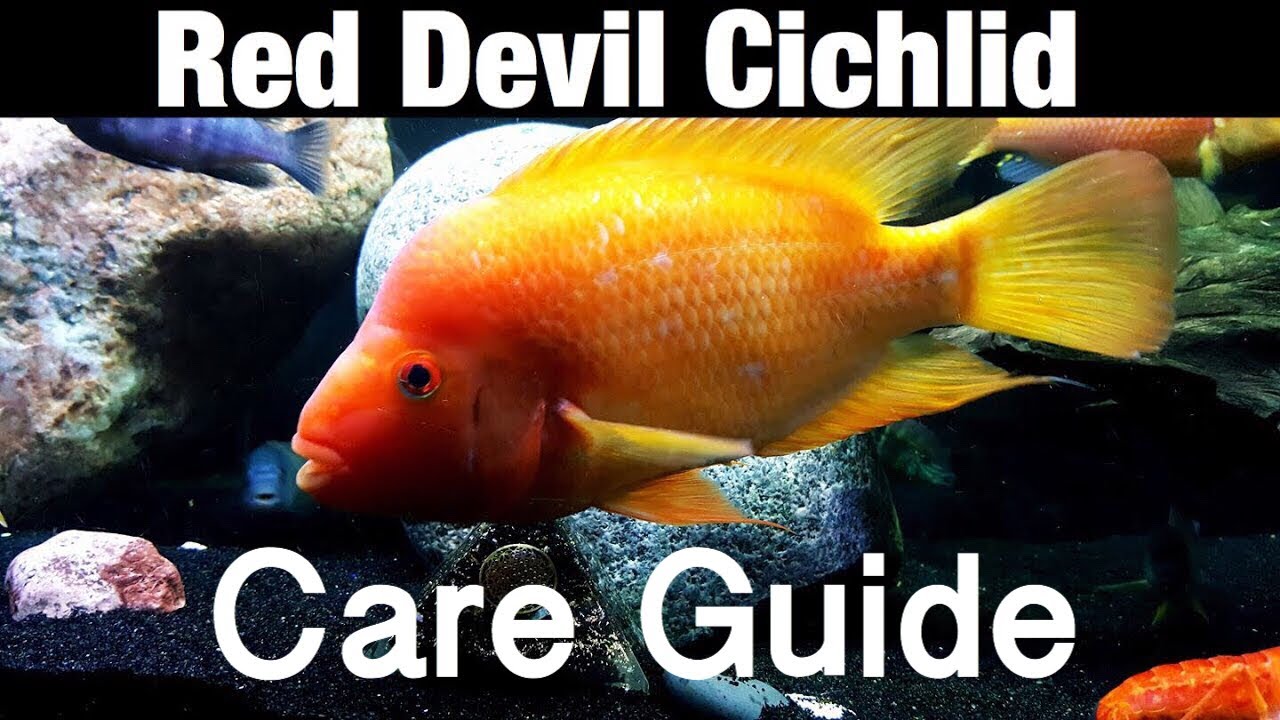







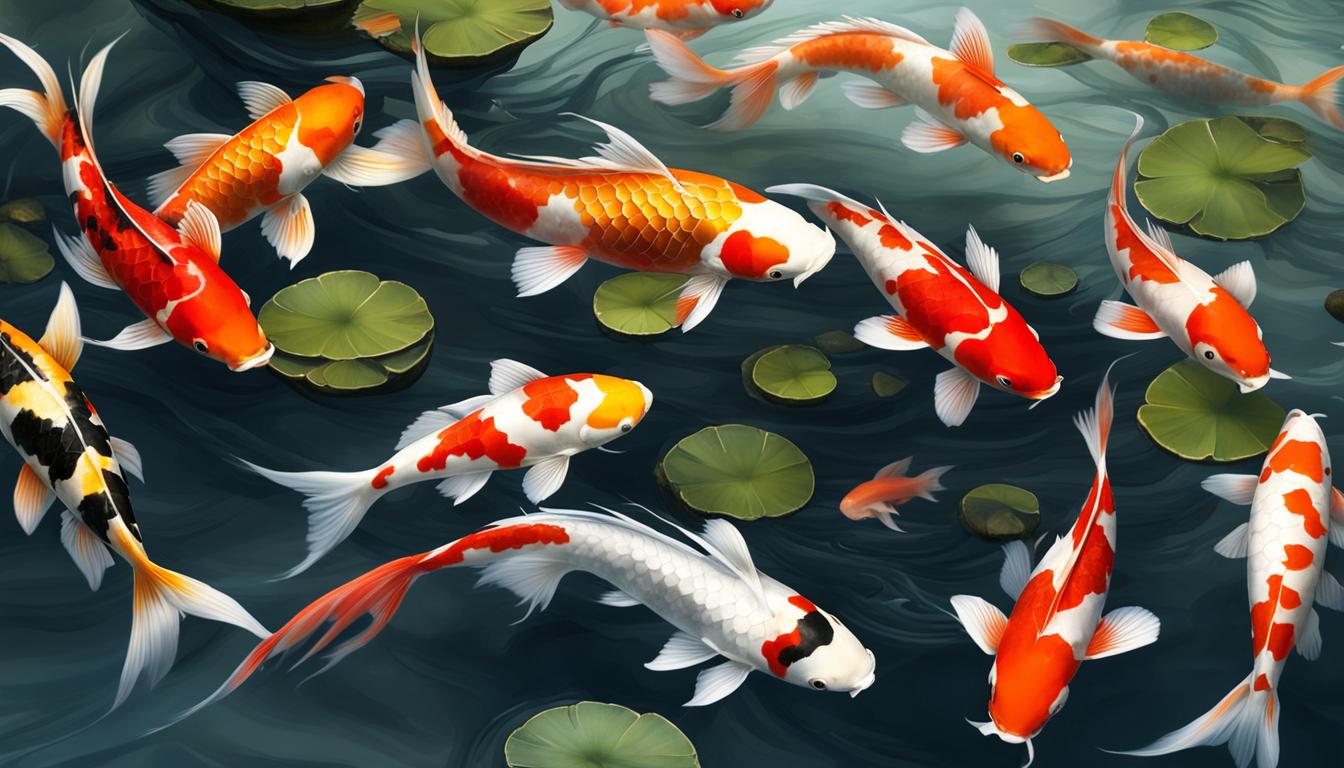
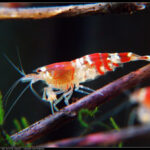
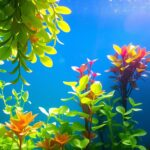
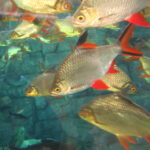
[…] loaches can peacefully coexist with cichlids, but it is essential to select the right type of cichlid and avoid aggressive species. Make sure that the tank provides adequate hiding spots and a large enough swimming area […]
[…] Fish species to avoid due to potential aggression or compatibility issues: Avoid keeping Blue Phantom Plecos with aggressive or territorial fish species, as they may get stressed or become targets of aggression. Also, avoid keeping them with fin-nipping species like barbs or aggressive cichlids. […]